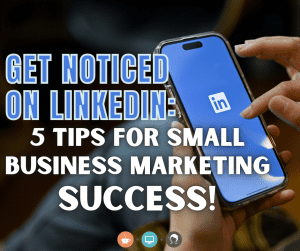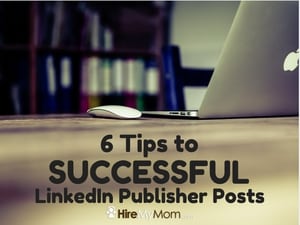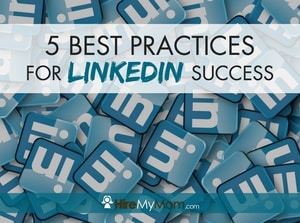Get noticed on LinkedIn: 5 Tips for Small Business Marketing Success

Are you looking for ways to market your small business on LinkedIn? If so, you’re in the right place. The professional networking site is an invaluable tool for small businesses, and is a great way to reach new customers, build relationships, and increase brand awareness. But it can be difficult to know where to start when it comes to promoting your business on the platform. In this blog post, we’ll provide you with five tips to help you get noticed on LinkedIn and maximize your small business marketing success. Read on to learn more!
1) Use Keywords in Your Profile
Step one for marketing on LinkedIn is obviously to create a business page! Once you’ve done that, it’s time to fill in all the blanks on your profile using keywords! What are keywords? Well, they are words and phrases related to your industry and what people are searching for. By including them in your company description and job titles, you’ll be more likely to show up when potential customers search. Don’t be afraid to use common industry terms and phrases as well – this will help ensure that people who are looking for what you offer can easily find you.
There are third party services you can pay to find keywords for you, but if you don’t want to use one of those, you can do some manual searching on LinkedIn to see what’s trending. First, take a peek at trending articles in your industry. Second, use the search feature to lookup hashtags, and you can see how many posts are using the hashtag you think might be relevant.
2) Optimize Your Company Page
Having a strong presence on LinkedIn is important for any small business that wants to reach potential customers and build a network. One of the most effective ways to do this is to optimize your company page. A well-crafted company page can help you stand out from the competition, generate more engagement, and give you more exposure on the platform. Here are some tips to make sure your company page is optimized:
- Make sure your page looks professional. Use high-quality photos and relevant copy that accurately reflects your business and services.
- Link to other platforms. Make sure your page is linked to your website and other social media channels to increase visibility.
- Leverage tags. Use relevant tags that describe your industry and target audience so people can find your page more easily.
- Encourage followers. Invite existing customers, partners, and colleagues to follow your page and share it with their networks.
- Monitor performance. Track how many visits, likes, and shares your page receives and adjust your strategy accordingly.
By following these tips, you can ensure that your company page looks professional, reaches the right people, and drives more engagement on LinkedIn.
3) Create Shareable Content
Creating content that your followers will want to share is essential to success in marketing your small business on LinkedIn. Start by creating content that provides value to your audience. This can include blog posts, videos, articles, or other forms of media that educate, inform, and entertain them. When it comes to content, quality should always be prioritized over quantity. Focus on producing high-quality content that resonates with your target audience.
It’s also important to consider the frequency of your content. Consider scheduling out posts in advance using a tool like Hootsuite. This will help you stay consistent in your posting schedule and ensure that you are actively engaging your followers with new content. Finally, make sure to promote your content across other social media channels as well. By leveraging different networks, you can extend the reach of your content and create more opportunities for engagement and sharing.
4) Engage with Others
Engagement is key to success on any social media platform, and LinkedIn is no exception. Interacting with other users can help you build your brand visibility and credibility, and it’s a great way to network. Here are some tips for engaging with other users on LinkedIn:
- Comment on posts. Commenting on posts from people in your network is an effective way to show your support, start conversations, and build relationships.
- Post interesting content. Sharing content from industry leaders or thought leaders is a great way to show that you’re knowledgeable and current on trends.
- Ask questions. Posting questions related to your industry or niche can help spark conversations and engage people who have similar interests.
- Connect with influencers. Connecting with influencers in your industry can help build your network and expose your brand to more people.
- Join groups. Joining relevant groups can be a great way to connect with potential customers and prospects, as well as build relationships with other professionals in your industry.
5) Advertise on LinkedIn
LinkedIn Ads provide a great opportunity to promote your small business. You can create targeted campaigns that reach the right audience and measure the success of your campaigns with real-time analytics. With LinkedIn Ads, you can create lead generation forms to capture contact information, drive website traffic, and measure conversions. Start exploring today to find out how advertising on LinkedIn can help you achieve your business goals.
What marketing tips do you have for using LinkedIn? Share them with us today!


